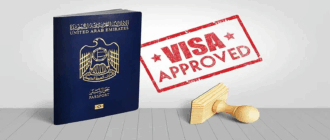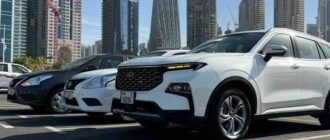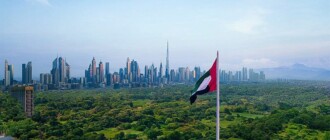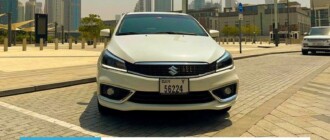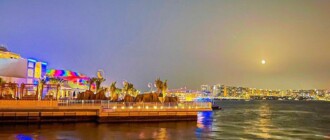Quick Overview
- Best for speed: Metro (Red & Green Lines) — fast along Sheikh Zayed Road and key hubs.
- Best for Marina/JBR: Tram — seamless link to Metro and The Palm Monorail (separate ticket).
- Best coverage: Buses — extensive network filling metro/tram gaps.
- Best door-to-door: Taxis & Ride-Hailing — widely available and regulated.
- Best scenic ride: Abra & Ferries — classic creek boats and coastal routes.
Nol Cards & Tickets
Dubai’s unified fare system is called Nol. It works across the Metro, Tram, and Public Buses, and on many marine services and parking meters. You tap in/out at gates or readers; fares depend on zones traveled.
Which Nol option should I choose?
- Nol Red Ticket: Disposable paper ticket for occasional trips or day passes; ideal for short visits.
- Nol Silver: Reloadable card for frequent use; good default for most travelers.
- Nol Gold: Access to Gold Class cabins (metro/tram) with premium seating; higher fare applies.
- Nol Blue: Personalized card with added features; typically for residents.
Good to know: Balance top-ups are available at metro stations, ticket offices, vending machines, and many supermarkets. Some services may offer contactless bank card support at gates, but Nol remains the most widely accepted.
Dubai Metro
The driverless Dubai Metro anchors the city’s transit. The Red Line runs parallel to Sheikh Zayed Road serving the airport (DXB T1/T3), Downtown, Business Bay, Mall of the Emirates, Dubai Marina/JLT, and beyond. The Green Line covers older districts, including Deira and Bur Dubai, with convenient access to the Dubai Creek and heritage areas.
Hours & Frequency
- Daily service with extended hours on weekends; trains run every few minutes at peak times.
- First/last train times vary by station; check real-time schedules in the RTA app or station boards.
Cabins & Etiquette
- Gold Class: premium, at one end of the train (higher fare).
- Women & Children: designated cabin; men should avoid entering.
- Standard: general cabins.
Dubai Tram
The Dubai Tram circulates around Dubai Marina, JBR, and Al Sufouh, linking to the Metro and to the Palm Monorail. It’s the most convenient way to hop between the beach, Marina Walk, and residential clusters without traffic.
- Flat fare per ride with Nol; tap in/out on platform validators.
- Air-conditioned stations with platform screen doors; level boarding.
Public Buses
RTA buses provide city-wide coverage with modern air-conditioned vehicles. Key hubs include major metro stations and interchanges in Deira and Bur Dubai. Digital signs show route numbers and destinations, and buses accept Nol.
When buses make sense
- For areas beyond walking distance of a metro or tram stop.
- Late evenings and early mornings when frequencies differ.
- Direct cross-town routes that avoid transfers.
Plan routes with the RTA/S’hail app for accurate ETAs and walking times.
Taxis & Ride-Hailing
Dubai’s taxis are plentiful, metered, and regulated. You can hail on the street, queue at malls/hotels, or book via the RTA app. Ride-hailing platforms (e.g., Careem and others) operate widely and often show transparent ETAs and pricing.
Useful notes
- Airport and late-night surcharges may apply; receipts available on request.
- All official taxis are metered; cash and cards are generally accepted.
- For longer trips (e.g., to Abu Dhabi), agree on fare basis upfront or use app estimates.
Water Transport (Abra, Ferry, Water Bus)
Dubai’s marine transit offers scenic and practical routes. On the Dubai Creek, traditional abras shuttle between Deira and Bur Dubai — a quick, authentic way to cross. Along the coast, water buses and ferries serve select routes and sightseeing journeys.
- Abras: short creek crossings; frequent and affordable.
- Ferry & Water Bus: coastal routes with comfortable cabins; check timetables.
Airport Transfers & Late-Night Travel
From DXB (Dubai International Airport)
- Metro: Red Line serves Terminals 1 & 3 directly; follow “Metro” signs.
- Taxi/Ride-Hailing: 24/7 ranks at each terminal; good for late arrivals or heavy luggage.
- Bus: Several routes connect nearby districts; check RTA for schedules.
From DWC (Al Maktoum International)
- Airport buses and taxis cover the larger distances to Marina/Jebel Ali; plan extra time.
Driving, Salik & Parking
Driving in Dubai is straightforward on multi-lane highways with clear signage. Most rental cars include basic insurance; international visitors can drive with a valid license (requirements vary by country; check with the rental agency).
Salik (Electronic Tolls)
- Automatic tolling: Passing a Salik gate records a charge electronically.
- Rental cars: Charges are billed later by your rental company with a small admin fee.
- Private vehicles: Residents maintain a Salik account and top up as needed.
Parking
- City parking zones are metered; signage shows hours and fees.
- Payment methods include Nol, SMS/app, or card where available.
- Malls often offer free or validated parking; premium zones may charge after a grace period.
Cycling & E-Scooters
Dubai is expanding its cycling lanes and micro-mobility options. Popular leisure tracks include Nad Al Sheba and Al Qudra; urban corridors are steadily improving. E-scooters operate in designated zones with speed limits, helmet and age rules, and parking requirements.
- Respect lane markings and yield to pedestrians.
- Park only in designated bays to avoid fines.
- Hydrate and avoid midday heat in summer months.
Accessibility
Most metro and tram stations provide lifts, tactile paving, level boarding, and accessible restrooms. Buses include low floors and wheelchair areas on many routes. If you need assistance, contact RTA ahead of travel or use the app to plan step-free journeys.
Etiquette & Safety
- Keep right on escalators; let passengers alight before boarding.</ li>
- Eating and drinking are restricted inside metro/tram cabins; fines apply.
- Use the Women & Children cabin if applicable; respect signage.
- During Ramadan, observe local customs and reduced eating/drinking in public during daylight.
- Public transport is monitored and generally very safe; report suspicious behavior via RTA channels.
Sample Itineraries (No Car Needed)
Classic First-Timer (1 Day)
- Morning: Metro to Burj Khalifa/Dubai Mall (Red Line). Visit the Dubai Fountain and observation deck.
- Afternoon: Metro to Mall of the Emirates; tram or taxi to JBR Beach.
- Evening: Tram/Metro to Dubai Marina Walk for dinner; taxi back to hotel late.
Old Dubai & Creek
- Green Line to Al Fahidi (heritage area, museums).
- Abra across the Creek to Deira’s Gold & Spice Souks.
- Bus/Metro back; optional evening ferry for skyline views.
FAQs: Transport in Dubai (2025)
- Do I need a Nol card to ride everything?
- Metro, tram, and public buses rely on Nol. Some marine services and parking meters also accept Nol. Keep a small balance topped up for seamless travel.
- How many zones are there and how do fares work?
- Fares are zone-based and calculated by the distance between tap-in and tap-out. If you cross more zones, you pay more. Day passes cap costs for heavy travel days.
- What’s the fastest way from the airport to Downtown?
- The Red Line Metro (DXB T1/T3) is usually fastest and avoids traffic. For late-night arrivals or heavy luggage, taxis and ride-hailing are convenient 24/7.
- Can I take luggage on the Metro?
- Yes. Keep luggage stable and avoid blocking doors or aisles. Consider taxis during peak hours if carrying multiple bags.
- Is public transport safe at night?
- Yes. Stations and vehicles are monitored, clean, and well-lit. If the Metro is closed, use licensed taxis or ride-hailing.

